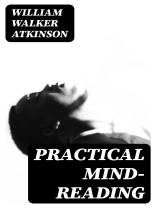William Walker Atkinson’s ‘Practical Mind-Reading’ delves into the realm of telepathy and extrasensory perception, providing detailed explanations and practical techniques for those interested in developing their mind-reading abilities. The book is written in a straightforward and accessible manner, making it suitable for both beginners and experienced practitioners. Atkinson’s work is a fascinating exploration of the human mind and its potential beyond the realms of conventional understanding. This book is a valuable resource for anyone intrigued by the mysteries of the mind and looking to expand their psychic capabilities. Atkinson’s deep knowledge and expertise shine through in every page, offering insights and exercises that can lead readers on a transformative journey of self-discovery and heightened awareness.
عن المؤلف
William Walker Atkinson (1862–1932) was an influential figure in the early 20th century’s New Thought movement, a philosophy which teaches that the mind is the key to unlocking personal power and spirituality. He was a prolific writer, attorney, merchant, and publisher. Atkinson began his professional life as a grocer, before becoming an attorney. However, after experiencing a mental and physical breakdown, and subsequently recovering, he became passionate about the power of the mind, which became a hallmark theme in his writings. One of his well-known works, ‘Practical Mind-Reading’ (1907), illustrates his fascination with the esoteric and the power of the mind, falling within the genre of mentalism and psychic phenomena. In this work, Atkinson delves into the techniques and implications of thought-transference, expanding on the timeless intrigue with human consciousness and psychic abilities. His writing reflects an analytical approach to what might be considered a mystical domain, providing exercises and practical guidance for those interested in exploring mind-reading. Atkinson wrote under several pseudonyms, notably Yogi Ramacharaka and Theron Q. Dumont, which allowed him to branch into various subjects like yoga, spirituality, and personal success, thus displaying his versatility and depth of knowledge on matters of the mind and human potential. His literary style combines a practical, instructional format with elements of motivational and inspirational discourse, which has been fundamental in shaping the paradigms of later New Thought authors and self-help movements.












